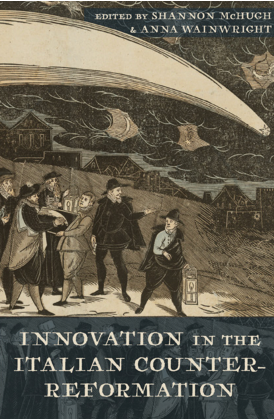
Outdoing Colonna: Widowhood Poetry in the Late Cinquecento. Amsterdam University Press. 2021.
An examination of the influence of Colonna’s widowed poetry on three women writers of the second half of the sixteenth century: Laura Battiferri, Chiara Matraini and Francesca Turina.
Wainwright demonstrates how Colonna’s famous proemial sonnet, Scrivo sol per sfogar l’interna doglia, and her widowed persona more broadly, is reflected in the works of these later poets. This study also significantly elongates the timeline of Colonna’s influence, proving just how late her rime vedovili were being imitated and explored: deep into the Counter-Reformation, Turina and Matraini were still engaging directly with her work as a way to legitimate their own authorial voices. The chapter’s evidence also troubles longstanding scholarly understandings about how ‘anxiety of influence’ has worked for women writers.
Race in the European Renaissance. ACMRS Press. 2022.
Race in the European Renaissance provides both educators and students the tools they need to discuss race in the European Renaissance both in its unique historical contexts and as part of a broader continuum with racial thinking today.
The volume gathers scholars of the English, French, Italian, and Iberian Renaissances to provide exercises, lesson plans, methodologies, readings, and other resources designed to bring discussions of race into a broad spectrum of classes on the early modern period, from literature to art history to the history of science. This book is designed to help educators create more diverse and inclusive syllabi and curricula that engage and address a diverse, twenty-first-century student body composed of students from a growing variety of cultural, national, ethnic, and racial backgrounds. By providing clear, concise, and diverse methodologies and analytical focuses, Race in the European Renaissance will help educators in all areas of Renaissance Studies overcome the anxiety and fear that can come with stepping outside of their expertise to engage with the topic of race, while also providing expert scholars of race in the Renaissance with new techniques and pedagogies to enhance the classroom experience of their students.

“The Fair Warrior in the City of Florence: Maddalena Salvetti’s Poems to Christine of Lorraine.” Innovation in the Italian Counter-Reformation. University of Delaware Press. 2020.
The thirteen essays of Innovation in the Italian Counter-Reformation present a radical reconsideration of literary production in post-Tridentine Italy.
The enduring "black legend" of the Italian Counter-Reformation, which has held sway in both scholarly and popular culture, maintains that the Council of Trent ushered in a cultural dark age in Italy, snuffing out the spectacular creative production of the Renaissance. As a result, the decades following Trent have been mostly overlooked in Italian literary studies, in particular. The thirteen essays of Innovation in the Italian Counter-Reformation present a radical reconsideration of literary production in post-Tridentine Italy. With particular attention to the much-maligned tradition of spiritual literature, the volume’s contributors weave literary analysis together with religion, theater, art, music, science, and gender to demonstrate that the literature of this period not only merits study but is positively innovative.
“Tied Up in Chains of Adamant: Recovering Race in Tasso’s Armida Before, and After, Acrasia.” Spenser Studies, 35. University of Chicago Press Journals. 2021.
A look at how race interplays with gender and religion in Tasso’s Armida Before, and After, Acrasia.
Spenser’s use of Italian sources in The Faerie Queene has been widely explored by scholars. But how does race work in those texts themselves? In this essay, Wainwright considers the Bower of Bliss and its literary antecedents—Spenser’s sources provide a rich opportunity to explore race and its interplay with gender and religion. Wainwright’s focus lies on the character of Acrasia’s foremother, the Muslim enchantress Armida, and the dramatic change to her fate between the two versions of Tasso’s Gerusalemme liberata (1581) and the Gerusalemme conquistata (1593). Wainwright argues that a consideration of how Tasso violently excludes Armida from the second half of the Conquistata, which was published after Spenser’s The Faerie Queene, provides a new understanding of the particular racialization of Tasso’s enchantress. Across substantial national and religious boundaries, Spenser’s and Tasso’s choices demonstrate a common racial logic in play in 1590s Europe, one that allows neither Armida nor Acrasia to survive their poems.